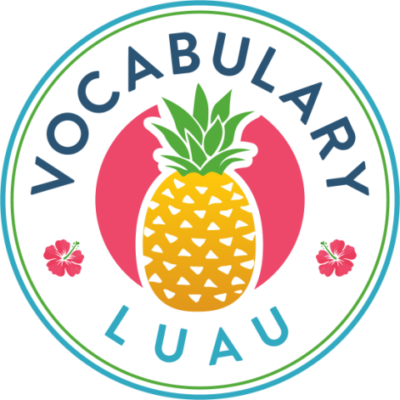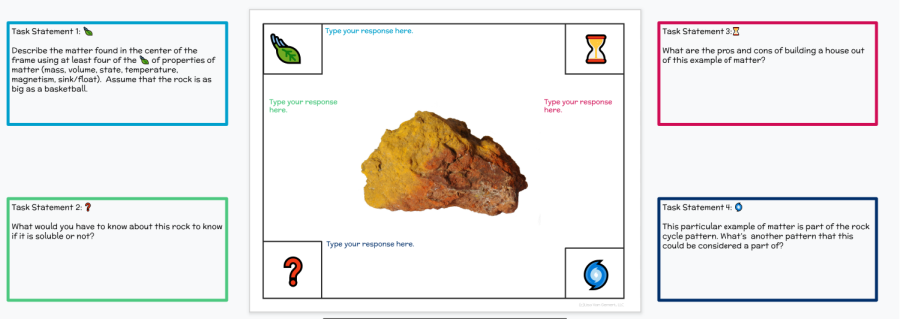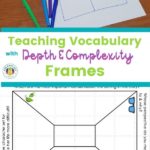Picking a favorite chapter of your book is a lot like choosing a favorite child. Yet when I was writing the chapter on frames in the Depth and Complexity book, I must admit the chapter on frames was one I truly enjoyed writing.
I love Depth and Complexity frames for the strength of critical thinking, for the way that they help teachers differentiate instruction, and for their incredible flexibility.
One of my favorite uses for depth and frames is to help students truly gain an ownership and understanding of the vocabulary word.
Let’s look at how you do this step-by-step.
? How to Teach Vocabulary with Depth and Complexity Frames
Using Depth and Complexity frames to teach vocabulary is straightforward, but there are a lot of choices to make.
That flexibility is terrific because it means they can work for everyone.
Even if you’ve never used them before, you’ll be fine!
? The Basics of Depth and Complexity Frames
Frames are a graphic organizer specifically used with the Depth and Complexity framework.
A Depth and Complexity frame looks like a picture frame.
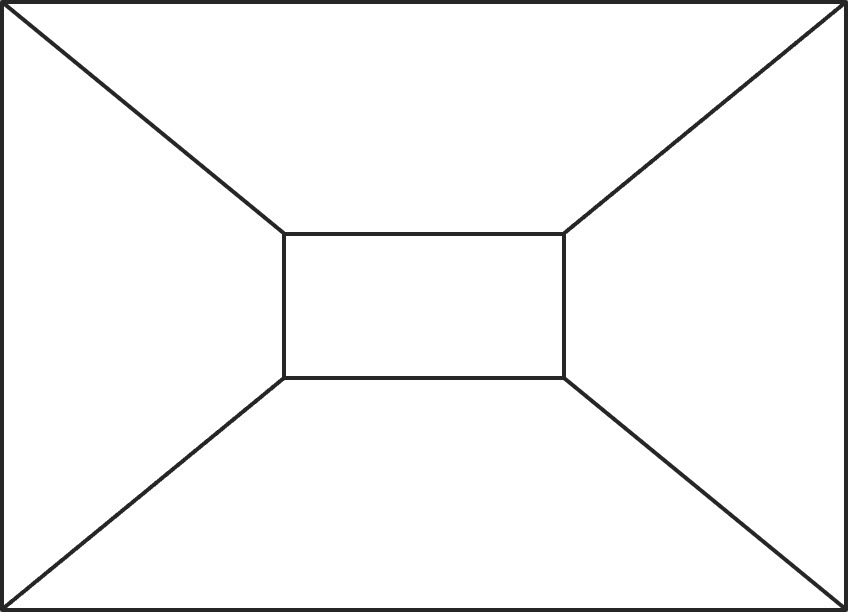
Just like a picture frame is designed to highlight a picture (as well as protect it), a Depth and Complexity frame’s purpose is to draw attention to an idea and keep it there.
In the middle of the frame, it is common to place some representation of the topic of the frame. That may be a picture, a graph, or a body of text.
Each of the sections surrounding the center will have one or more elements of Depth and Complexity associated with it, as well as a task statement/question that tells students what to do in that section.
While there is a set of common icons used to represent the elements of Depth and Complexity, my co-author Ian Byrd and I use emoji (the great idea of his wife, Mary) for ease of use. You can use whatever you prefer.
? Decide on the word(s) to use in the frame
Let’s look at how to choose the word or words that make good Depth and Complexity frames.
Frame activities include Tier 2 and Tier 3 vocabulary words.
You can read more about that here, but essentially, it’s best for general vocabulary words and academic vocabulary words.
This is this is one of the activities that works equally well for both types of vocabulary, which is another reason why it’s such a great activity.
When you’re choosing a word, you not only have to decide if it’s a word that students need to know, but also if it’s a word that is important enough to justify doing an entire activity over it.
Some words don’t merit that. Some words are best practiced with quick games that have a number of words being reviewed or perhaps just a brief discussion.
When you’re looking at a framing activity, you’re looking at an entire lesson. It’s probably 30 minutes of instructional time, so you want to make sure that you’re not using the word that just doesn’t rise to that level of devotion.
I’m using the word “word” in this article, but that can be a multi-word term, also. The “word” can be “order of operations.”
? Suggestions for choosing words for frames
The words that make great candidates for Depth and Complexity frames are words that:
- students frequently confuse
- are important to an upcoming unit
- you know students will enjoy learning about
- lend themselves to a graphic representation or have a possible visual connection
- enrich their writing
- are interesting in their construction, history, connotation, or application
? One word or many words?
Remember when I said this activity was flexible? One of the most important ways this is true is that you have many options when it comes to word choice.
? Whole Class
In this option, all students in the class can make a frame of the same word.
This works great for words every student needs practice on or words that frequently misunderstood in a way that impacts instruction.
? Small Groups
You may divide students into small groups and give each group a different word to frame.
When you have multiple students working on the same frame, you can do two different things:
- Have them use a different color pen (or font color) so you can see who wrote what.
- If using a printed frame, you can have the students cut the frame apart, each complete a section, and then paste the frame back together on a piece of paper.
? Individually
You may choose a set of words to use and have different students in the class working on different words.
This doesn’t mean you have to choose 27 different words.
You may have five or six words that are being used, with multiple students completing frames on the same word independently.
If you have students working with more than one word, it allows you to deepen the experience.
When the frames are completed, you can have students do either an in-person or virtual gallery walk.
Students can look at each other’s words and learn more in hopes that then they will learn about a word that they want to translate into their own lexicon.
? Choose the type of frame you’re going to use
Once you have chosen the word or words you’re going to use, you’ll need to choose the type of frame your students will work with.
? Printable, digital, or student-created
You can use a printable paper version of a frame, you can use a digital frame, or you can have students create their own frame.
Note: If you choose a printable frame, you can download a free set of those I made. You can create your own digital frames, or, if you’re interested, you can purchase this set of them that I made.

If you make your own, you may want to follow the layout I followed. Notice that I used different colors to correspond to where students type. That makes it easier for students to match the task statement to the space they’re supposed to write.
This is a sample of what it would look like when the teacher had filled in the questions:
If you have students create their own frames, they can sketch on paper or on a device if their devices have that capability.
In this example, you can see a sketched frame about states of matter sketched out with only two sections. While four is typical, you can make as many (or few) sections as you want.
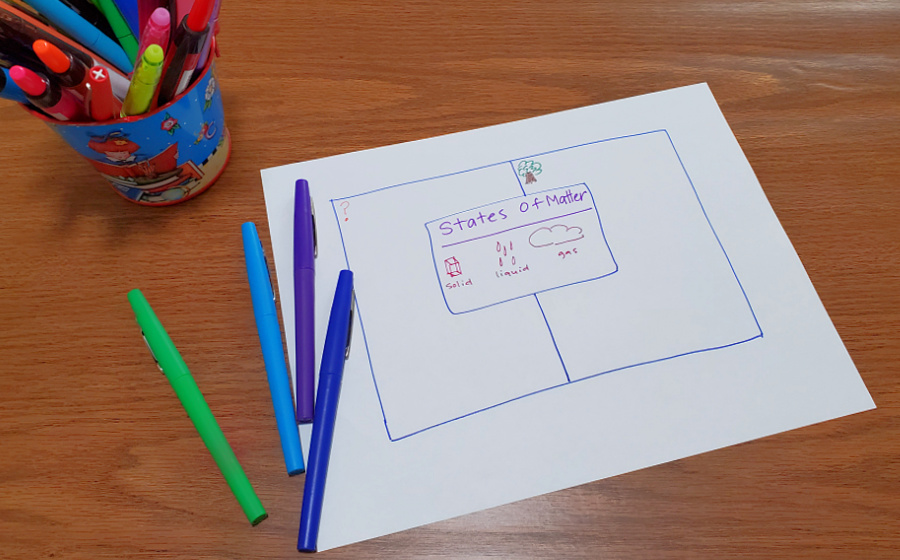
They can also construct a frame out of shapes in PowerPoint or Google Slides™.
This last option may add considerable time to the task, so you have to decide if it’s worth it to you.
? Frame format
Once you’ve chosen printable, digital, or student-created, decide what format of frame that you’d like to use.
Even though most people are used to seeing only a couple of different frames, there are actually a number of different frames from which to choose.
In this version, I put lines in the sections for students to write on.

This version is vertically oriented with two sections.
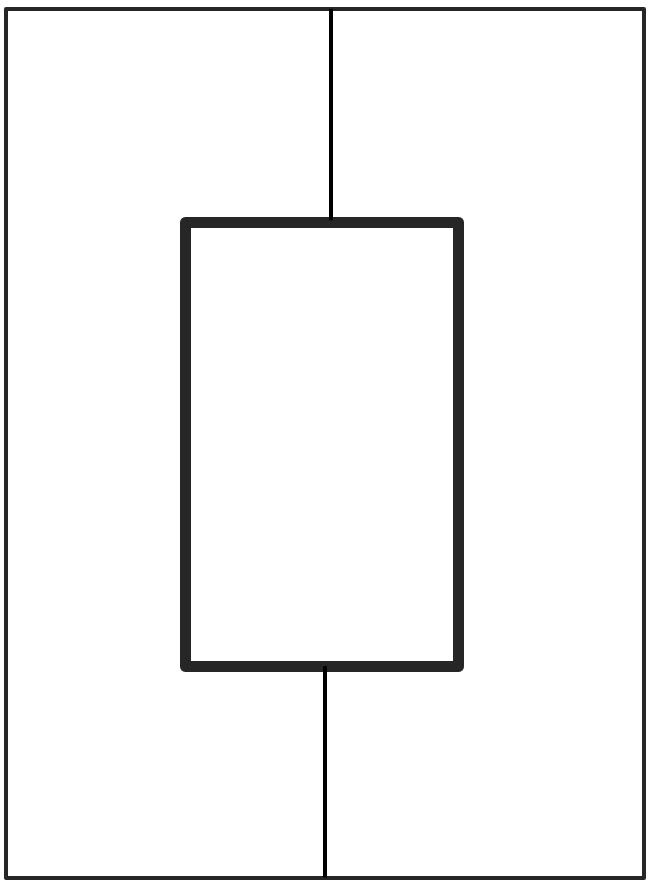
The possibilities are nearly endless.
You will want to choose the one that you feel like is best for both the word and the students.
If you have different students working different words, you may have different frame formats in the same activity. That’s perfectly fine.
You may find that certain words lend themselves to different formats of the frame.
For example, some words lend themselves to a graphic representation. If so, you will want to choose a frame that has a large central space (like the first example in this article).
If you’re looking at a word that you only want students to have three sections to complete as opposed to the traditional four, then you want to choose a frame that is adaptable to that.
Some of it is just aesthetics and novelty.
I like to change out the way that students look at frames just so that they don’t feel same-y.
- Sometimes I have them vertically oriented.
- Sometimes I have them horizontally oriented.
- Sometimes I put the prompts inside the sections, and sometimes I don’t.
- Sometimes I leave the sections blank, and sometimes I have the lines in the sections.
Play around with formats you like. You will find that a few types work well for you, and you will return to those again and again.
Now you have your words and your frame format. Next up: the Depth and Complexity elements themselves.
? Which elements of Depth and Complexity to use
Just like the frames themselves, you may have students all working with same elements of Depth and Complexity, you may have them working with different elements.
Altering the elements is a simple way to differentiate and accommodate different learners.
Even if I have students working on the same word as the vocabulary target word, I can have them using different elements of the Depth and Complexity framework in each section of the frame.
I might have high-ability learners working with the Complexity elements (Change over Time, Across Disciplines, and Multiple Perspectives).
In order to accommodate a struggling learner, I may have the same element of Depth and Complexity in every section of the frame.
For example, I could have them looking at the Details of the word in four different ways.
There’s no right or wrong. There’s only what works best for you based on what you need your students to understand about the word or term.
(Note: If you grab that free frames resource, you’ll see some more about the elements. Of course, my best advice is to get the book.)
There is no hierarchy within the elements themselves.
Even though some people see Language of the Discipline or Details as being less rigorous or requiring less critical thinking, than, say, Ethics or Trends, that isn’t necessarily true.
While the elements are divided into eight Depth elements and three Complexity elements, in practice, you can simplify or complexify any of them.
The power of the elements comes from the combination of the thinking skill connected to the element and the question that the teacher is asking.
That leads us to the next choice in setting up your frame: writing your questions.
? Writing questions for your Depth and Complexity frames
While we often focus on the frame format and the elements we choose, the most important thing that you will do when working with frames is crafting your questions.
Good questions are the key to getting your students to think critically.
This is where you truly accommodate or differentiate for different learners.
You may wonder why I put it as the last step, if it’s so important.
It’s because you can’t write the questions until you’ve chosen what words or terms you’re using, what format of frame students will be working with, and what elements of Depth and Complexity are going to be explored.
All of these must be decided before you craft your questions.
To develop strong questions, we want to make sure that we are combining the elements of Depth and Complexity with a high level of thinking.
This assumes that the student has had sufficient exposure to the word to know how to approach it deeply.
If students are constructing a frame for an unfamiliar word, then you will need to invest some of the frame space on fundamentals.
It’s also possible for a quality Depth and Complexity frame to stay at the knowing and understanding levels of Bloom’s.
I strongly advise against putting the question inside the frame itself.
That takes space away from the student response. Instead, put the question around the margin of the page, a screen display, or a separate page.
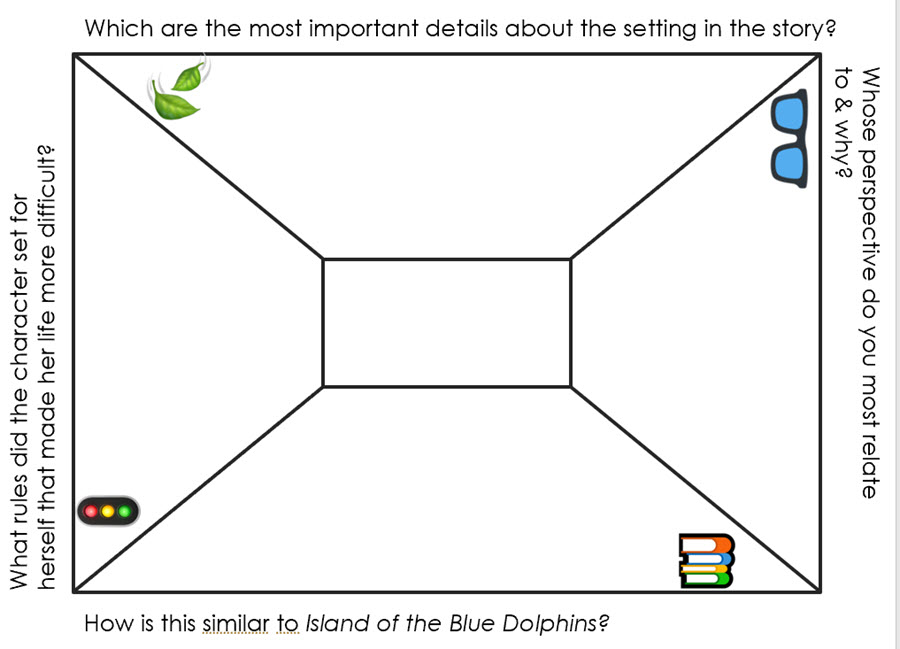
? Sample Questions
These sample questions are for a broad range of grade levels, so some may be far too simple or complex for your students.
The questions you ask must be driven by the outcome you desire.
If you want students to learn the basics of the word (spelling, grammar, etc.), your questions will be different than if you want them to integrate a vocabulary word into their writing or understand a concept in your discipline that they will be learning.
I’m sharing them to give you an idea of what kinds of questions you can use with a frame.
While these are just a few examples of the kinds of questions you can use in a Depth and Complexity vocabulary frame, I hope you find them helpful.
Details:
- What is the most important sound or letter in this word?
- What other words can you think of that have the same number of syllables as this word?
- What other words can you think of that have the same vowels as this word?
- In what important ways is this word the same as/different from ____ word?
- How many letters does this word have?
- Which letter in this word makes your mouth open widest?
- What tells you this word is connected to ______?
Big Idea:
- Make a synonym/antonym for this word using only one word (no phrases!)
- Explain the feeling evoked by this word.
- Explain why this word is worth knowing.
- What family of words does this word best fit in? (e.g., “words about love” or “words bout shapes” or “words about character flaws” or “words about the Earth”)
Language of the Discipline:
- Change this word into an adjective/adverb/noun.
- Look up the etymology of the word and explain it in your own words.
- What is the most common form of this word (part of speech)?
- How essential is this word to understanding the concept of ______?
Rules:
- What is the most important pronunciation rule this word is following?
- What phonics rule(s) is this word breaking?
- Can you think of an instance when you’ve heard or read this word used incorrectly?
- Explain the rules involved in using this word. “You should use this word when…” or “You should use this word as ______.”
- Who shouldn’t use this word and why?
- What letter could you take out that would still allow the word to be pronounced the same?
Patterns:
- Does this word/phrase follow a form of meter? If so, describe it.
- Write another word or phrase that has the same pattern of consonants and vowels (or stressed/unstressed syllables).
- How would you categorize this word if you were putting it in a group of words about _____? (For example, if you’re looking at science vocabulary, you might say “a group of words about life forms” or “a dictionary of cycles in science.”)
Unanswered Questions:
- Why do we use this word instead of __________? (For example, if the target word is “egregious,” words that could go in the blank would be “bad” or “terrible.”)
- Would you rather use this word or ___________?
- Why do we like long words like this?
- How would you change this word if you had to spell it differently from the way it’s currently spelled?
- Why is this a word that should be whispered/shouted?
Trends:
- Is this word more or less common than it used to be?
- Why do people use this word more than ________?
- In [insert other language], this word is spelled [insert word]. What similarities and differences do you see between the words?
Ethics:
- What are the disadvantages of using this word to represent ________?
- What is the greatest advantage of using this word to represent ______?
- How do the advantages of using this word outweigh the disadvantages? (or vice versa)
- Why does your teacher want you to own this word? How does he/she think it will benefit you?
Change over Time:
- How has the connotation of this word shifted from its original etymological meaning?
- How would you have described this concept five years ago before you knew this word?
- How likely are you to use this word [x] number of years from now?
- Describe a time in your past when this word would have been useful to know.
Across Disciplines:
- What did you used to call this concept before you learned this word for it?
- Convince a ___-grader that this is a word worth knowing.
- Explain this word as if you were talking to your _____ teacher (insert other content area here).
- If not this class, what other class are you likely to use this word in?
- We’re going to be studying ______ later on in the year. Explain why we’d be likely/unlikely to use this word when studying that.
Multiple Perspectives:
- Who would most like this word, a scientist or a baker? (substitute any professions)
- Who may find the use of this word objectionable?
- What character in [insert story] would be most likely to use this word?
- Is this word more likely to be used by [x] author or [x] author?
- How does a/the ______ feel about this word?
The possibilities are endless!
As you use frames to explore vocabulary, you’ll get better and better at creating questions that get kids to the level of mastery of the word they need to use it correctly and effectively.
? Non-question Task Statements
In addition to questions as shared above, you can also give students tasks to complete in the sections of the frame.
Here are just a few ideas:
- Write this word in a declarative sentence that has seven words.
- Write this word in an interrogative sentence with an appositive phrase.
- Write a sentence using both this word and an antonym of it.
- Defend the use of this word to someone who thinks it’s offensive/silly/useless/inferior to another word/too hard to spell.
? The Center of the Frame:
While it’s common to just put the word or term itself in the center of the frame, there are other options. Consider these ideas:
? Have the students:
- Sketch the concept represented by this word
- Write this word in one color and then write examples of it in a smaller size and different color
- Draw a person using the word
- Draw a non-example of this word and draw a red circle with a line through it over your drawing
- Write the word backwards
- Write the word in a different language
- Zentangle the word
Remember that example of a sketched frame above? It had a sketched center as well.
When students work in the center of the frame, there’s another opportunity for deeper thinking.
? The teacher can place:
A section of text using the word (if you do this, use questions that explore the word in this context)
- A graph
- A chart
- A map
- An illustration
Feel free to have a task statement or question related to the content in the center of the frame.
For example, if you have a graph of the slope of a line, you can ask a question about it or have a task related to it.
If you have a diagram of the water cycle, you can have them label it.
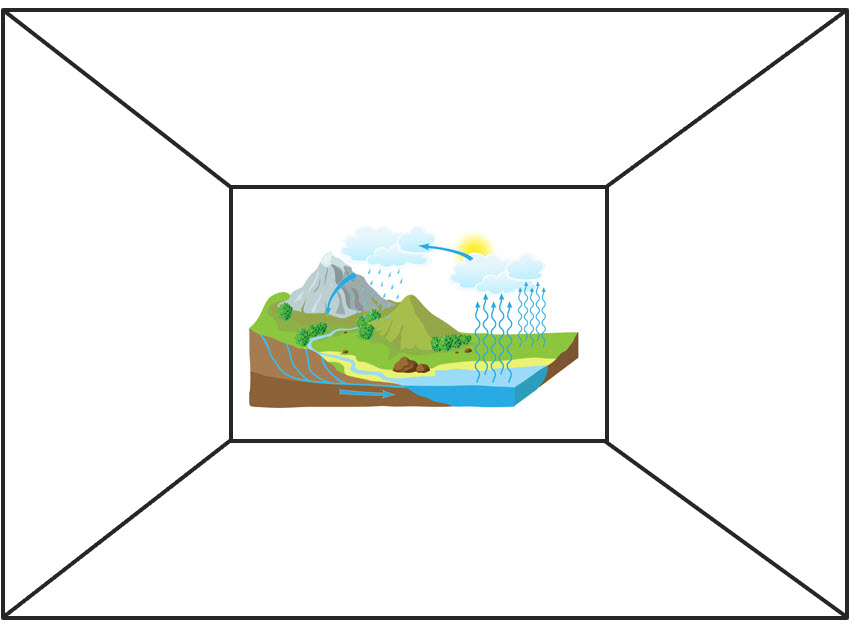
Here’s an example with text:
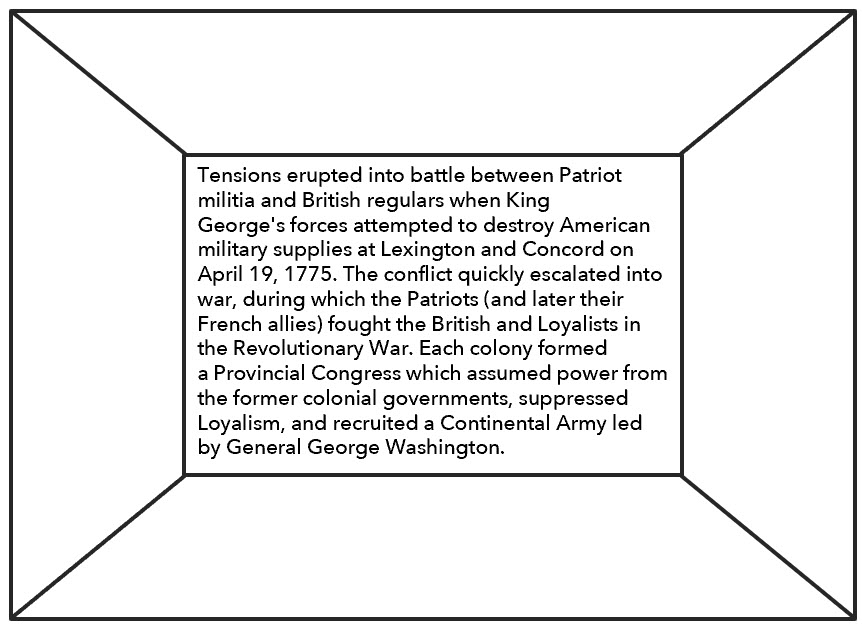
? Wrapping Up:
Depth and Complexity frames make a perfect vocabulary activity.
Even if your students are not particularly used to using the Depth and Complexity framework itself, frames can be a great way to get them interested in it.
Because they’re already working with the content piece that they know (the word itself), learning the different elements of Depth and Complexity can be very seamless and almost effortless.
If your students have not had very much exposure (or none!) to the Depth and Complexity framework, my suggestion would be to introduce them to a single element of Depth and Complexity and have all of the questions on the frame be related to that particular prompt.
If you use this Depth and Complexity frames to teach vocabulary (or anything else!), please tag me on Twitter (@gifted_guru) or email me at lisa@vocabularyluau.com.
I’d to see what you and your students come up with! ?
